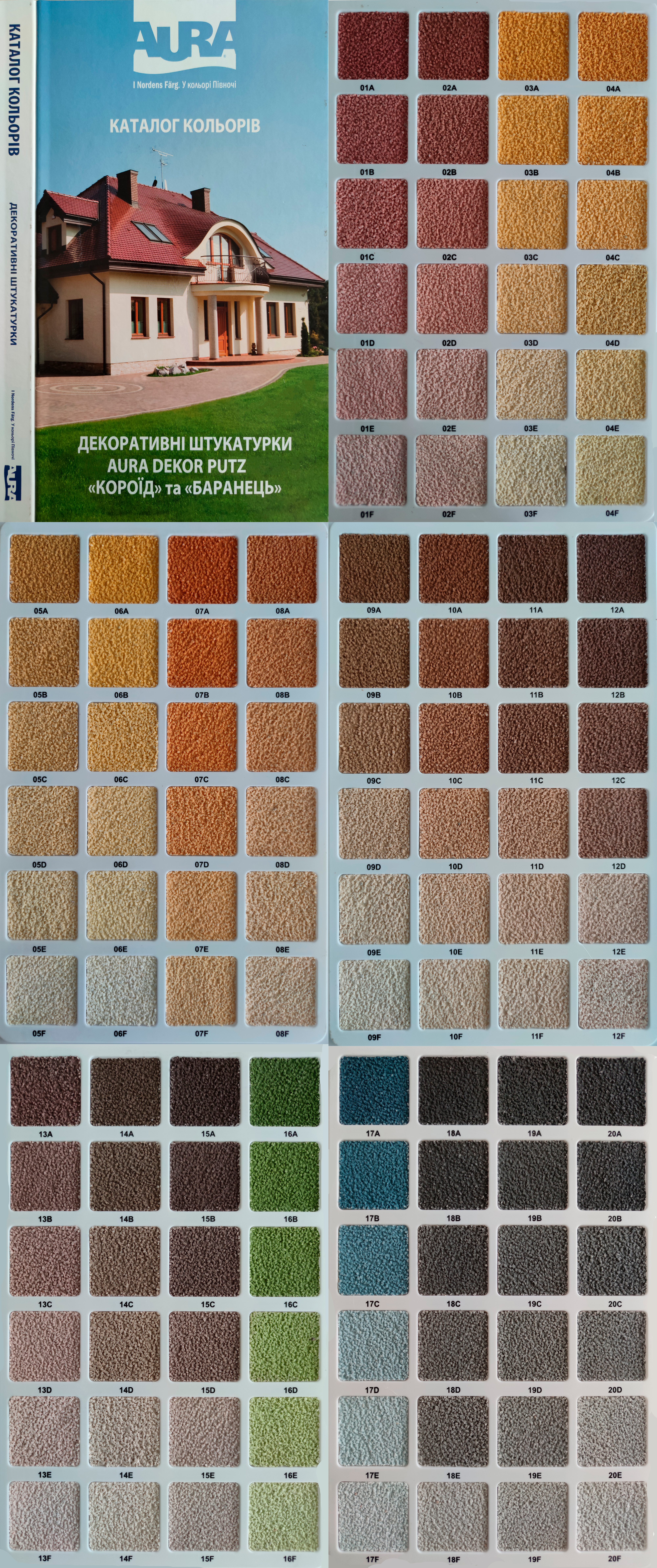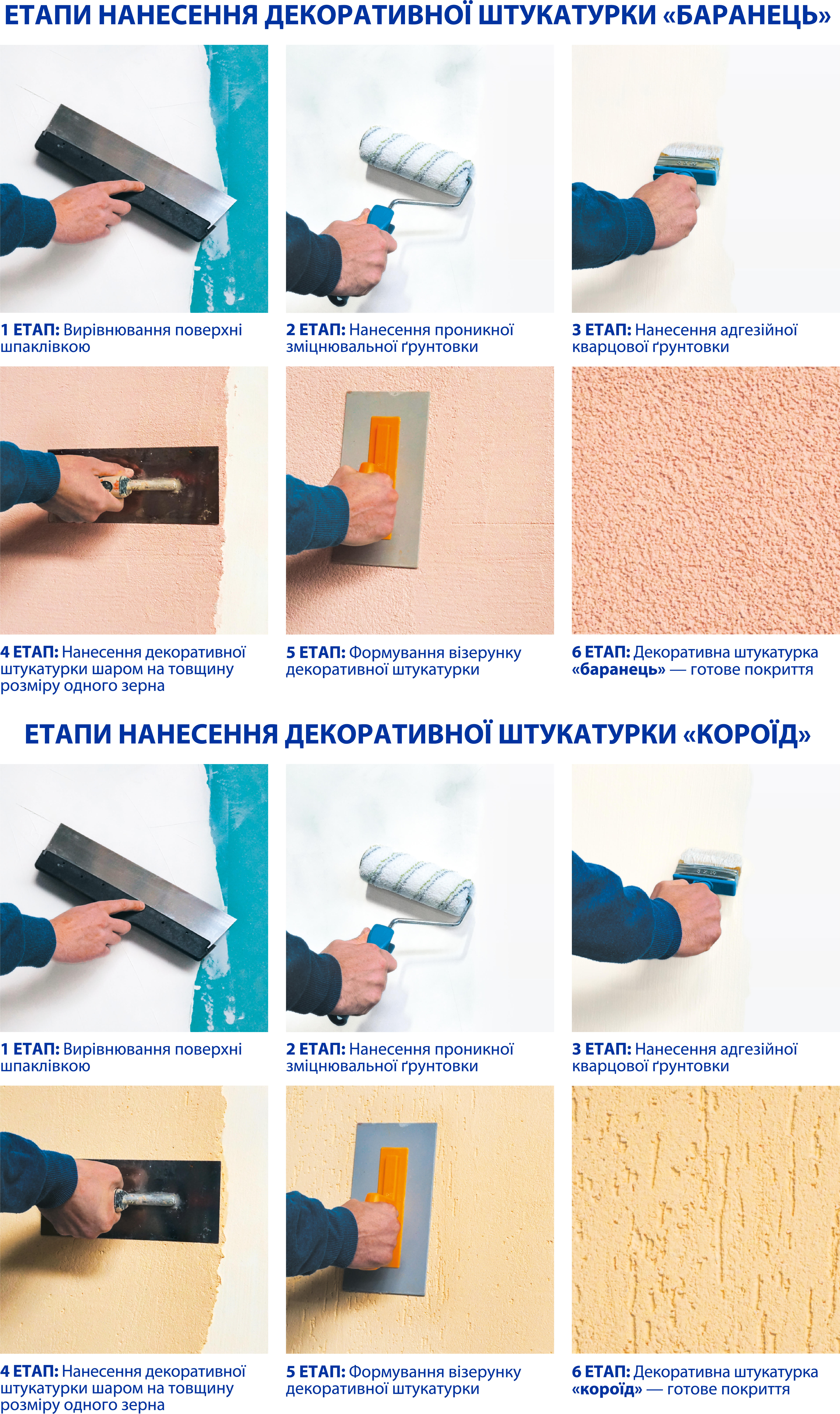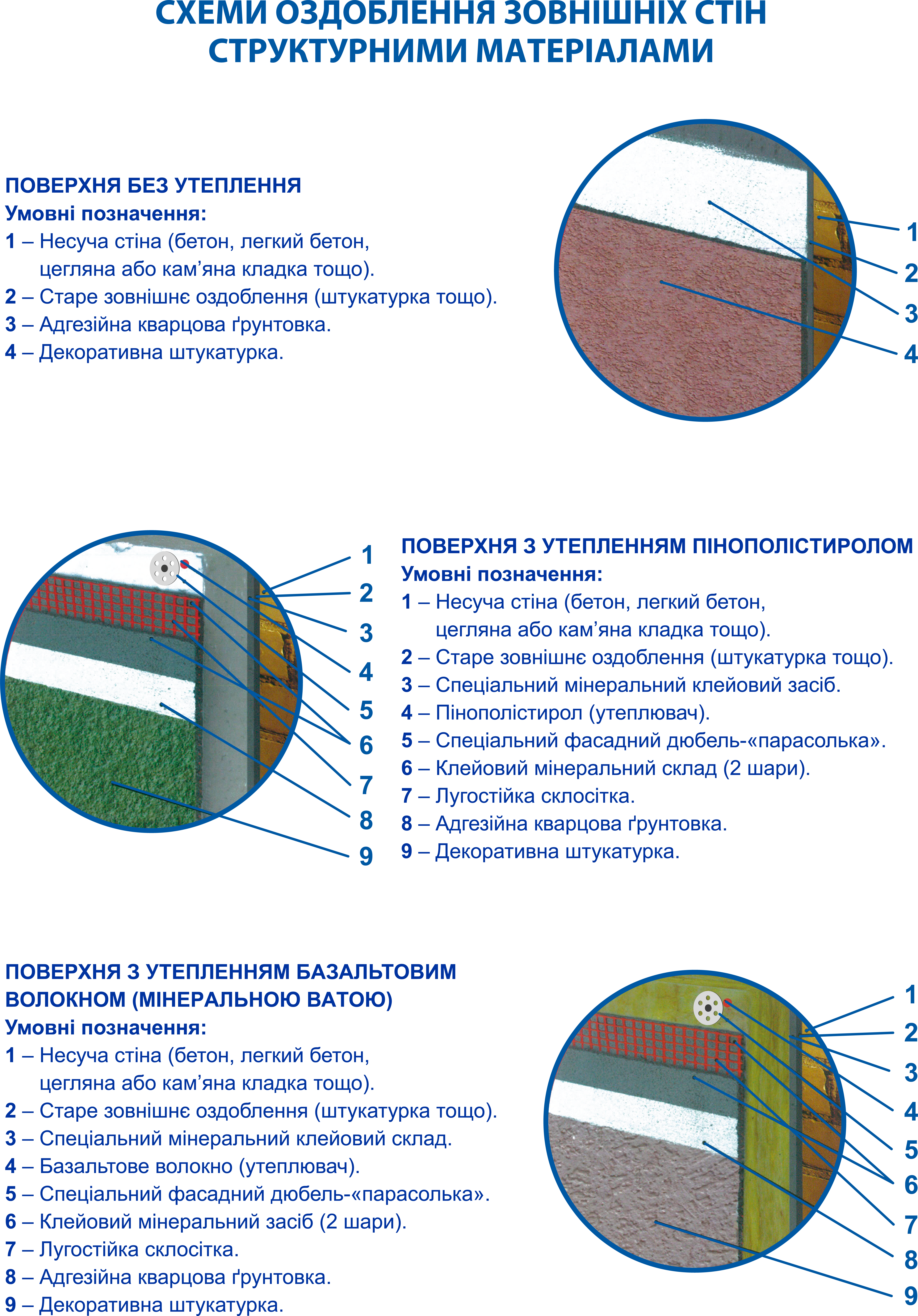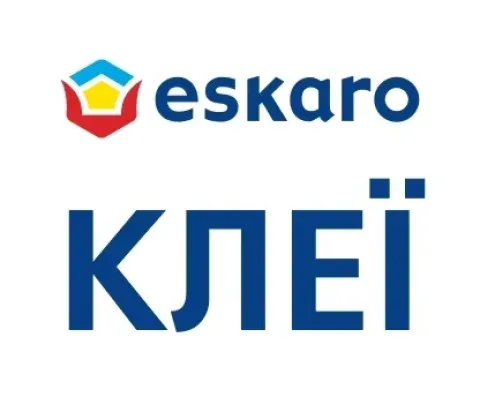
Catalog of colors of decorative plasters Aura Dekor Putz "Bark beetle" and "Lamb"


Surface preparation:
The base must be even, dry and strong. "Efflorescence", peeling, wallpaper, various kinds of contamination, weak, crumbling areas, and substances that reduce the adhesion of the plaster to the base (dust, fats, oils, etc.) must be carefully removed. Areas affected by mold or moss must be thoroughly cleaned mechanically and treated with an anti-mold agent (BIOTOL Home or Antiskimmel) and dried. Fill in unevenness with putty. Treat surfaces with Aquastop Facade penetrating primer. Treat metal parts with an anti-corrosion primer. Fresh cement (and lime) surfaces should be aged for at least one month before treatment. Before applying the plaster, the base must be treated with a universal silicone adhesive (white-pigmented) primer with quartz filler Aura Dekor Silikon Grund, which is tinted to the color of the finishing coating. Aura Dekor Silikon Grund increases the adhesion of the plaster to the base (due to the creation of a strong rough structural surface with a fine pattern), creates a uniform optical effect (due to the presence of white pigment), significantly reduces the cost and simplifies the process of applying plaster, as well as the process of forming a "pattern"
Applying:
Mix the plaster thoroughly without beating (with a drill at low speed). Do not add water. Excess water may make the plaster unusable! Apply to the base from the bottom up using a stainless steel spatula (or a suitable machine application device). Smooth the plaster with a stainless steel spatula until a layer the thickness of the grain is achieved. Immediately or within 10 minutes (depending on the temperature, after the applied coating stops sticking to the tool), rub the plaster with circular, vertical or horizontal movements of the trowel, forming a uniform textured surface. When performing work on forming the texture, hold the tool parallel to the surface. The “pattern” of the coating depends on the direction of the plaster being rubbed. To obtain the required texture, it is necessary to clean the trowel of material residues as often as possible. Apply plaster to a large area with the same tool and in the same way - in order to avoid discrepancies in the "pattern", as well as the visual effect of differences in color shades (the presence of "spots") on different parts of the surface. Apply plaster to adjacent parts of the surface using the "wet-on-wet" method. Work on one plane should be carried out continuously - from corner to corner of the room or building, or within the relief elements. If an unscheduled break is required, stick masking tape along the finish line of the work, which should then be removed with the remains of the plaster after it has been applied and the texture has been given. During application, the temperature of the air, material and base should be from +10°C to +30°C. It is not recommended to apply plaster in conditions of direct sunlight, high (above 30°C) air temperature, rain, fog, strong wind. Freshly applied plaster must be protected from rain, sub-zero temperatures, excessive drying (for example, from direct sunlight) for 24 hours using special fences made of film, mesh or foil.


Tinting:
Machine tinting using the Eskarocolor system or manual tinting with TM Aura dyes in light tones (no more than 2% by volume). Mix the tinted plaster thoroughly without beating. Due to the use of natural fillers in the plaster, slight color tone fluctuations are possible, therefore, on adjacent surfaces and for processing large areas, it is necessary to use material from one batch or mix a sufficient amount of material from different batches in one container in advance. After the structural plaster has completely dried, the resulting textured surface can be painted with the appropriate water-dispersion paints TM Aura or TM Eskaro.









